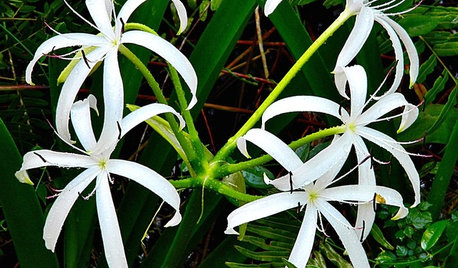blk freshwater swamp soil (called black gumbo) for veg garden?
arauquoia
14 years ago
Related Stories

GARDENING GUIDESHow to Stop Worrying and Start Loving Clay Soil
Clay has many more benefits than you might imagine
Full Story
GARDENING GUIDESGreat Design Plant: Crinum Americanum
Bright white flowers with thin delicate petals grace this water-loving southern lily
Full Story
FRONT YARD IDEASBefore and After: Front Lawn to Prairie Garden
How they did it: Homeowners create a plan, stick to it and keep the neighbors (and wildlife) in mind
Full Story
EARTH DAYGrow a Beautiful Garden With Ecofriendly Greywater
Reducing home water waste means lower bills and a healthier planet. Here's how to set up a greywater home irrigation system that can help
Full Story
LANDSCAPE DESIGNNatural Swimming Pools: More Beauty, No Chemicals
Keep your skin and the environment healthy with a pool that cleans itself, naturally
Full Story






louisianagal
Kimmsr
Related Professionals
Danbury Landscape Architects & Landscape Designers · Ashland Landscape Architects & Landscape Designers · Hershey Landscape Architects & Landscape Designers · Andover Landscape Contractors · East Chicago Landscape Contractors · Fort Hunt Landscape Contractors · Lady Lake Landscape Contractors · Laguna Hills Landscape Contractors · Lewisville Landscape Contractors · North Richland Hills Landscape Contractors · Saint George Landscape Contractors · St. Louis Landscape Contractors · Ansonia Landscape Contractors · Palos Heights Landscape Contractors · Manchester Decks, Patios & Outdoor Enclosuresreg_pnw7
oldmainer
sweetkountry
scarletdaisies
seramas
toxcrusadr